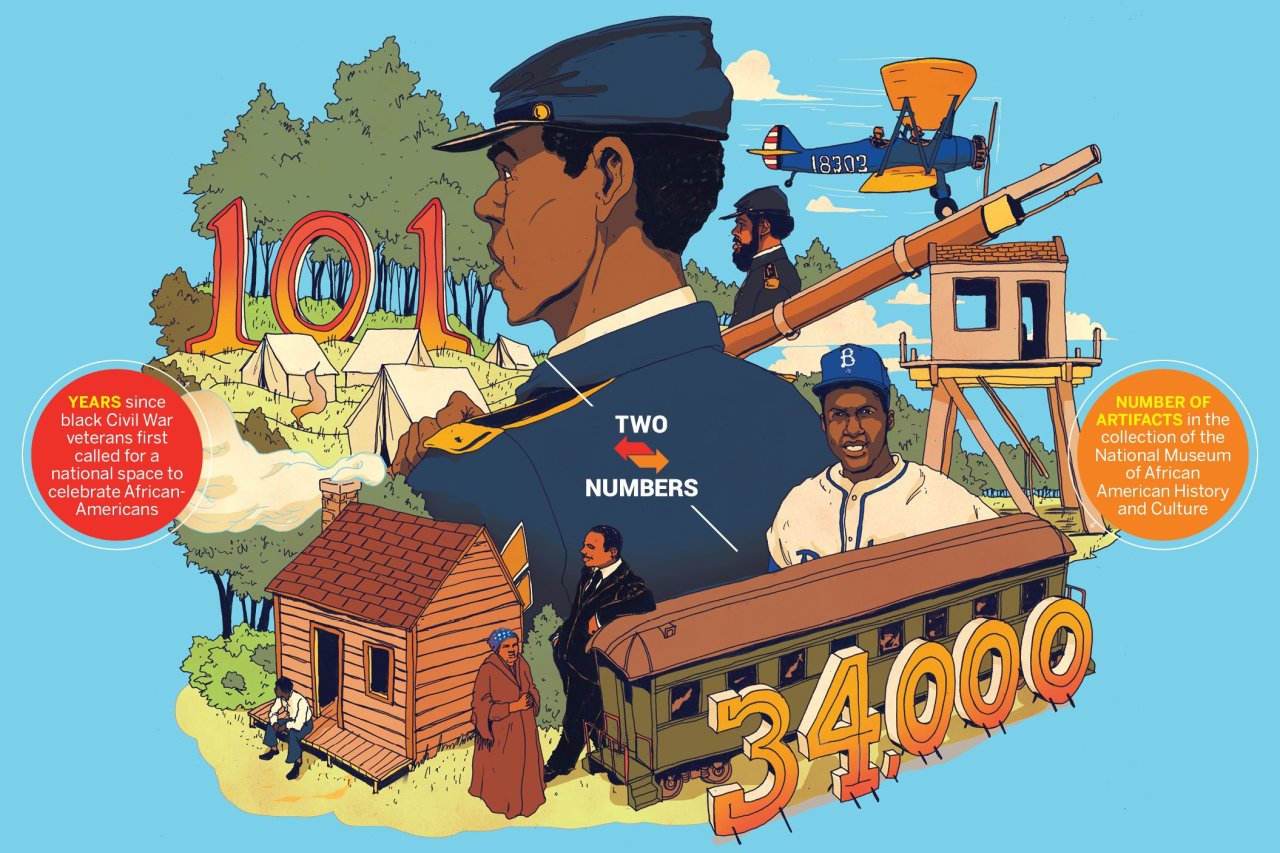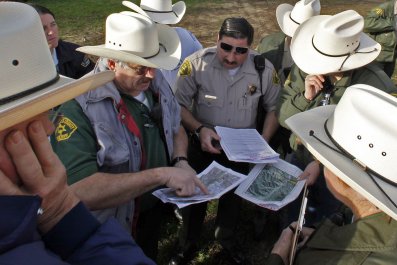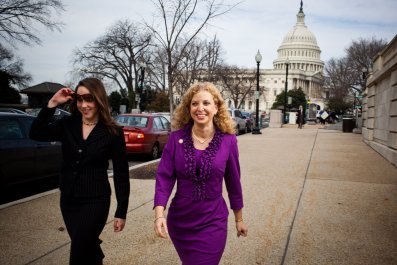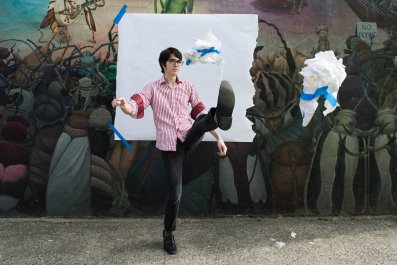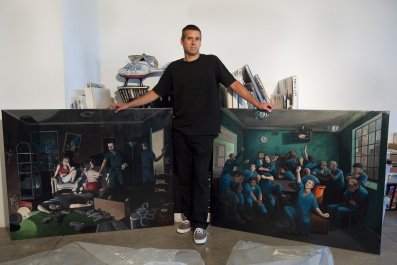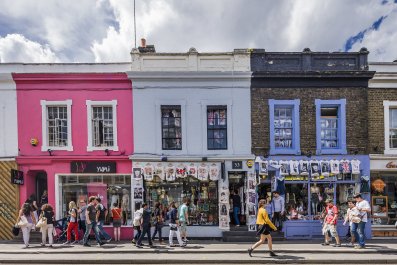The Smithsonian's National Museum of African American History and Culture was over a century in the making. In 1915, black Civil War veterans collected funds they later put toward creating a museum on the National Mall that would celebrate African-American achievement. In 1929, President Calvin Coolidge signed Public Resolution 107, establishing a commission to plan its construction, but the project went nowhere. It took a renewed effort by lawmakers and African-American leaders beginning in the 1960s, and then decades of planning and proposals, before President George W. Bush signed legislation in 2003 authorizing the museum, which is set to open September 24, steps from the Washington Monument.
"It's one of those sites and projects that comes about only once in a generation," says the lead designer of the building, David Adjaye. "It's always magical to complete a project, but to complete this one on the National Mall, it's very profound. It's very humbling."
Construction on the exterior of the building, a glass structure wrapped in a three-tiered bronze-colored scrim that's meant to recall a motif in African sculpture (it looks like boxes stacked on a figure's head), was completed in 2015. Curators are now filling the galleries with artifacts from a collection of some 34,000 items spanning centuries or longer. Museum Director Lonnie Bunch says the exhaustive preparation and organizing is "really almost like planning a military exercise."
Larger artifacts already in place include a 1944 training plane used by the black military pilots known as the Tuskegee Airmen; a once-segregated railway car and a guard tower from the Louisiana State Penitentiary in Angola, both of which the museum lowered in place with cranes before constructing the roof; a 19th-century slave cabin from South Carolina; and Chuck Berry's red Cadillac.
"When I walk through, I feel the weight of my ancestors," Bunch says. "I feel an amazing sense of joy that we are close to giving to America, giving to the world, a gift. A gift of understanding who we are as a people in ways that we haven't before."
The museum's nine floors contain three history galleries covering slavery through present day, including the #BlackLivesMatter movement; a theater named for donor Oprah Winfrey; culture galleries featuring African-American icons of music, theater, film and television; and a Contemplative Court, where visitors can reflect on what they've seen.
Adjaye has said "there's triumph and there's also incredible tragedy" in the history of the African-American experience. Bunch agrees: "You cannot tell stories of celebration and resistance without understanding the trials and travails."



